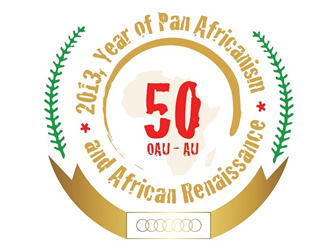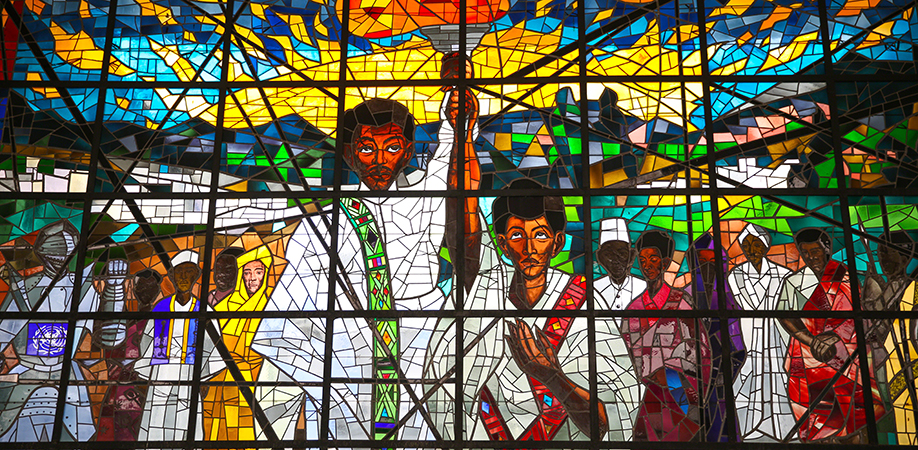History of Africa’s Regional Integration Efforts

From the time of independence, there have been failed attempts to industrialize efficiently using import-substitution, which gave rise to the notion of regional integration as a means to facilitate structural transformation in Africa. As a result, African countries have embraced regional integration as an important component of their development strategies primarily driven by the economic rational of overcoming the constraint of small and fractioned economies working in isolation. Several pan-African organizations have successively been working towards deepening economic, social and political cooperation and integration in Africa. A brief overview of regional integration proceedings on the continent is given below.
A number of colonial cross-border arrangements have continued to exist post-independence and serve the regional integration agenda thus far. Prime examples are related to the previous African Financial Community (CFA) zone, comprising the West African CFA franc and the Central African CFA franc. The West African CFA franc was ultimately integrated to the West African Economic and Monetary Union (WAEMU) in the territory of ECOWAS, while the Central African CFA franc is set to join the envisioned Economic and Monetary Union of Central Africa (CEMAC) in the ECCAS region. Likewise in Southern Africa, the Southern African Customs Union (SACU) with its associated monetary union – the Common Monetary Area – is set to be integrated to the SADC constituency.
Various pan-African organizations are, through different mechanisms, promoting sustainable economic growth and development, where the key component of regional integration is present in their workings. ECA was established by the Economic and Social Council of the United Nations in 1958 as one of the five regional commissions of the United Nations that, together with partners and member States, consecutively work towards sustainable development in Africa. ECA focuses on providing technical assistance by undertaking research and policy analysis to strengthen the capacity of institutions driving the regional integration agenda, including the African Union, regional economic communities and member States.
Moreover, a key priority of ECA has been to target Africa’s development challenges, particularly in the context of poverty eradication, to ensure sustainable growth and good governance on the continent and thus promote international cooperation for Africa’s development. In this regard, ECA had, in the 1960s, recommended the creation of subregional groupings in Africa to serve that purpose. Around the same time, the Heads of State and Government of 30 of the 32 independent African nations gathered to establish the Organization of African Unity (OAU) at the Conference of Independent African States on 25 May 1963.[1] Apart from the liberalization efforts of colonization and apartheid, the main objectives of OAU were: to promote unity and solidarity among African States; to organize and strengthen cooperation for development on the continent; to protect the sovereignty and territorial integrity of its member States; and to encourage international cooperation as outlined by the United Nations.[2] Parallel to the creation of OAU was the establishment of the African Development Bank Group (AfDB). It was formed after an agreement signed by 23 founding member States on 14 August 1963 in Khartoum, Sudan. The Group includes two other entities, with AfDB as the parent institution – the African Development Fund, which was established on 29 November 1972 by AfDB and 13 non-African countries; and the Nigeria Trust Fund, which was set up in 1976 by the Federal Government of Nigeria.
The AfDB Group, as a financial institution, was created as a response to a need for deeper cooperation in investments of public and private capital in projects that are likely to contribute to the economic and social development of the continent. The main objectives of the Group have been to mobilize and allocate resources for investments in member States, and provide policy advice and technical assistance that supports the development efforts on the continent.[3] 
The work of the above mentioned pan-African organizations are founded on treaties, protocols, conventions and other formal agreements entered into by sovereign States and international organizations (pan-African organizations and regional economic communities included) and are thus, binding under international law. Regional integration arrangements were either created under the framework of the Lagos Plan of Action, or arrangements that pre-existed it. The Lagos Plan of Action was a critical agreement in the history of regional integration in Africa. It was prominently supported by ECA and was adopted in 1980 at the OAU Extraordinary Summit in Lagos, Nigeria, where it was launched as a special initiative of the Organization. The Lagos Plan of Action itself, followed by the Final Act of Lagos, was borne out of the necessity for continental and national self-sufficiency and the creation of a self-reliant continental economy.
Among the decisions was the establishment of an African Economic Community in the foreseeable future, the strengthening of existing regional economic communities and the creation of others to cover the continent as a whole. ECOWAS already existed among the West African countries. Southern Africa also had a socioeconomic cooperation arrangement, the Southern African Development Coordination Conference created in the 1980s, which was later replaced by SADC in 1992. Similarly, Southern and Eastern Africa had established a Preferential Trade Area in 1981, which eventually became COMESA in 1993. Conversely, in Central Africa, ECCAS was created in 1983 by the leaders of the pre-existing Customs and Economic Union of Central Africa. The abovementioned arrangements were expected to function under the framework of the Lagos Plan of Action. The commitments in the Lagos Plan of Action and the Final Act of Lagos were translated into a specific agreement in Abuja, Nigeria in June 1991, when the OAU Heads of State and Government signed the Treaty Establishing the African Economic Community (the Abuja Treaty). The remaining regional economic communities – IGAD (formed in 1986), AMU (formed in 1989), CEN-SAD (formed in 1998), and EAC (formed in 1999) – were all recognized as regional economic communities after the Abuja Treaty.[4]
The Abuja Treaty is arguably the most important agreement as regards economic, social and political collaboration, coordination and convergence in Africa as it lays out the future of the continent with the establishment of an African Economic Community. The integration process is set to cover a period of 34 years from 1994 to 2028. Following the signing of the Abuja Treaty, the Assembly of Heads of State and Government directed the Committee on the Review of the Charter (established in 1979) to meet and re-examine the OAU Charter with a view to aligning it with the Abuja Treaty. Notwithstanding numerous attempts since 1979, OAU member States could not agree on amendments to the 1963 Charter.
Eventually, at the fourth Extraordinary Summit of the Organization of African Unity held in Sirté, Libya on 9 September 1999, the Heads of State and Government called for the establishment of an African Union (the Sirté Declaration) in conformity with the ultimate objectives of the OAU Charter and the provisions of the Abuja Treaty. This gave rise to the Constitutive Act of the African Union, in Lome, Togo on 11 July 2000. At the thirty-seventh session of the Assembly of Heads of State and Government, in 2001 in Lusaka, Zambia, a transition period of one year was agreed, while member States and the General Secretariat embarked on intensive consultations before the inaugural launch of the African Union in Durban, South Africa on 9 July 2002.
During the thirty-seventh session of the Assembly of Heads of State and Government, African leaders adopted the New Partnership for Africa’s Development (NEPAD). It was ratified by the African Union in 2002 in Durban, to deal with Africa’s development problems in a new paradigm. The main objectives of NEPAD have been to reduce poverty, put Africa on a sustainable development path, halt the marginalization of Africa, and empower women. The Partnership provides a comprehensive, integrated development plan that tackles key social, economic and political principles for the continent. A practical example is the Programme for Infrastructure Development in Africa, which is an initiative that comprises several cross-border infrastructure projects in the sectors of: transport, energy, water, and information and communications technology. Moreover, the Durban Summit also approved the creation of the NEPAD African Peer Review Mechanism, which became operational in 2003, for further promotion and monitoring of good governance practices in and among member States in Africa.
After a number of years with lagging regional integration initiatives, the fourth Conference of African Ministers of Integration adopted the Minimum Integration Programme in 9 May 2009. The programme contains an action plan to accelerate coordination, convergence and collaboration among the regional economic communities so as to achieve the ultimate objective of the African Economic Community. It also identifies financing and structural impediments hindering the implementation of the Abuja Treaty and offers a roadmap for how to overcome the challenges. In parallel, COMESA, EAC and SADC agreed to negotiate a Tripartite Free Trade Area Agreement (TFTA) as a building block of the Continental Free Trade Area (CFTA) on 22 October 2008.[5] Concurrent to the TFTA negotiations was the eighteenth ordinary session of the Assembly of the African Union held in January 2012 in Addis Ababa, Ethiopia, which was organized under the theme: “Boosting Intra-African Trade”. The Assembly of the African Union endorsed the Action Plan for Boosting Intra-African Trade and the fast-tracking of the Continental Free Trade Area.[6] Following the successful first negotiation forum held in Addis Ababa from 22 to 27 February 2016, and the second forum planned for May 2016, CFTA is arguably the most comprehensive regional trade arrangement in the process of negotiation at the moment.[7]
[1] The remaining two countries, Togo and Morocco, signed before the end of that year. Available from http://www.uneca.org/pages/overview
[2] African Union, AU in a nutshell. Available from http://www.au.int/en/about/nutshell#sthash.49alE8QD.dpuf
[3] African Development Bank Group, Mission and Strategy. Available from http://www.afdb.org/en/about-us/mission-strategy/
[4] Alan Matthews, Regional Integration and Food Security in Developing Countries (Food and Agriculture Organization of the United Nations, 2003).
[5] After lengthy negotiations, TFTA was officially launched in Sharm-el-Sheikh, Egypt on 10 June 2015.
[6] CFTA is not specified in the Abuja Treaty, it is, however, a preamble of the African Economic Community aiming at establishment by the indicative date of 2017.
[7] More information is available from http://www.au.int/en/ti/biat/about and http://au.int/en/pressreleases/21051/1st-meeting-continental-free-trade-...